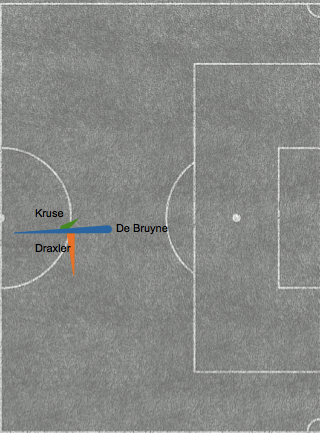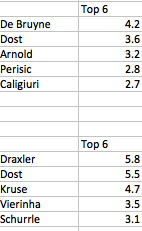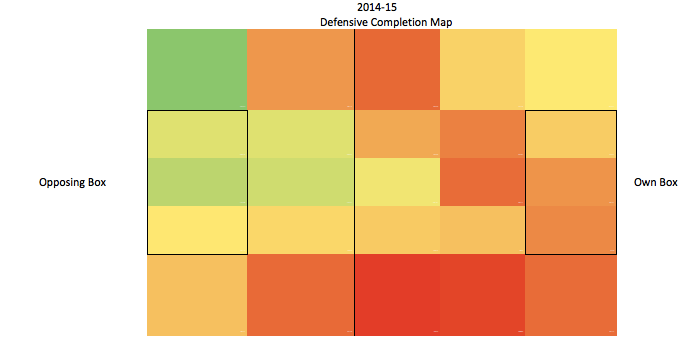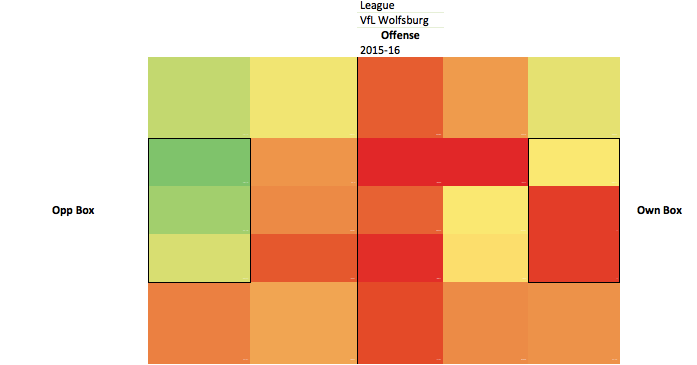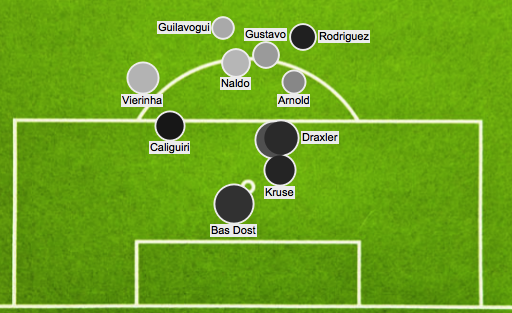Less than three years ago, Adam Masina was the reserve striker at Bologna Primavera, the under-19 team of the club. He was barely fielded and for him a future in football was very unlikely. Dumped by the club, he ended up in the third tier of Italian football, on loan at Giacomense, just because at the Emilian club were looking for youngsters, in order to receive the FIGC subsidies assigned to teams which regularly field under-21 players in their starting formation.
To find him a place in the team, Giacomense manager Fabio Gallo, decided to field him as the left wingback in his 3-5-2 and then even as the left-back when he switched to a 4-3-3. Gallo’s intuition has been Masina’s salvation: he became a regular of the team and his good performances granted him a return in Bologna.
The following year Masina became a regular of the rossoblu Primavera team, scoring 4 goals in 22 games. That season, Bologna were relegated from the Serie A, but last year Masina was promoted to the first team, becoming a regular of the rossoblu: with 28 appearances and 1 goal he had a breakthrough season and was one of the most important player in the Emilians comeback to the Serie A.
The impact with the top-tier of Italian football hasn’t stop his parabola: his growth has been consistent so far and he imposed himself not only as one of the best young players of the first half of the 2015/16 edition of the Serie A, but as one of the best fullback overall.
Masina has missed just a single game (because of a suspension) otherwise he has played every other Bologna league matches, both under Delio Rossi and Roberto Donadoni, featuring on the pitch the 100% of the available minutes (1440).
Given his past as a striker he is mainly an offensive minded fullback: with 2 goals and 3 assists so far he has directly contributed to the 26% of his team goals (with 0.31 non penalty-goals plus assists per 90 minutes, no other Bologna player, except striker Mattia Destro, had a greater impact offensively).
https://www.youtube.com/watch?v=Psi7KKh9ckY
It’s rare to find a leftback with the off-the-ball qualities of a striker
Masina is involved a lot in his team offensive plays, and with 39.4 passes p90, only four of his team-mates, all midfielders, play more passes than him over the course of 90 minutes. He is also relatively tidy in his passing game (74.0 %) , considering those passes are often played high up the pitch and Bologna direct style of play overall (their passing percentage is 75.3%).
He creates 0.8 chances per 90 and completes 0.6 crosses per 90 with a 30.0% accuracy: an excellent percentage if we keep in mind that last season just five players across Europe top-5 leagues had a cross accuracy greater than 30.0%.
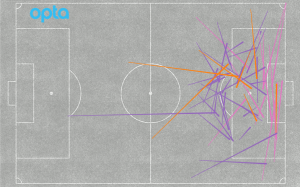
Donadoni, appointed at the end of October, has immediately identified Masina’s qualities and the importance he could have in Bologna fight to avoid relegation: in the last three games has started to field Rossettini, usually a centre-back, at right-back in order to give extra-defensive cover, leaving even more offensive freedom to his left-back.
Masina is not sensationally skilled or lightning fast (after all he is a 189cms of height per 79 kgs of weight) but is still able to complete 0.8 dribbles per 90, being dispossessed just 0,5 times p90.
However his height means that he is dominant in the air: he has won the 72.2 % of his aerial duels, or if you prefer, 2.4 duels per 90.
At the start of the season defence was considered his Achilles' heel, but Alex Ferrari is the only Bologna player, although with almost 600 minutes played in less than him, who exceeds Masina 2.8 tackles per 90.
His 69.2 % percentage of tackles won is good, but the high volume of challenges in which is involved means he is dribbled past 1.3 times per 90, suggesting he has still room to improve in one-on-ones. Even so he partially balance this flaw out with a natural tendency to anticipate play, as his impressive 3.5 interceptions per 90 minutes confirm.
Thanks to his dual Moroccan and Italian nationality he has debuted in Luigi Di Biagio’s Italy under-21 team and he has already fallen under the radars of Italian top- teams, with Roma, Inter and Juventus all keen of him.
At just 21 years of age, Masina has still room for improvement but is already incredibly consistent both offensively and defensively. Given the shortage of players in his role in Italian and European football, this young left-back is definitely one to watch in 2016.
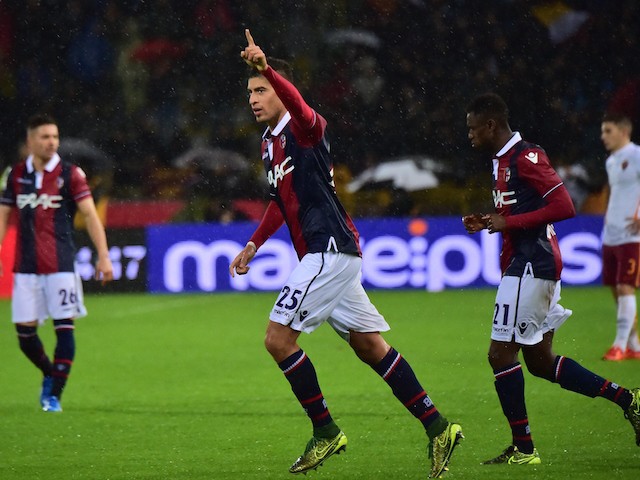
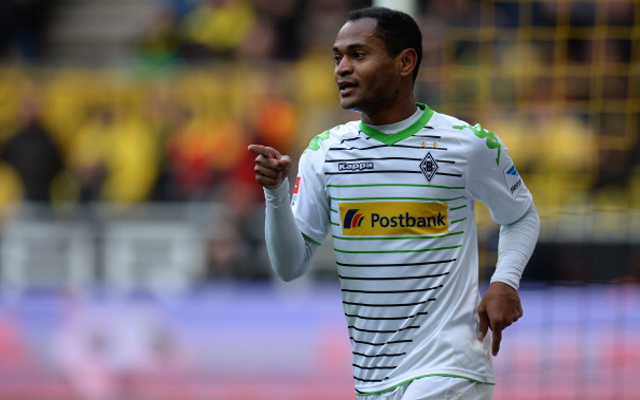
 Since the beginning of last season, no Bundesliga team has a higher passing % within 25 yards of opposing goal than Gladbach's 43.7%.
Since the beginning of last season, no Bundesliga team has a higher passing % within 25 yards of opposing goal than Gladbach's 43.7%. 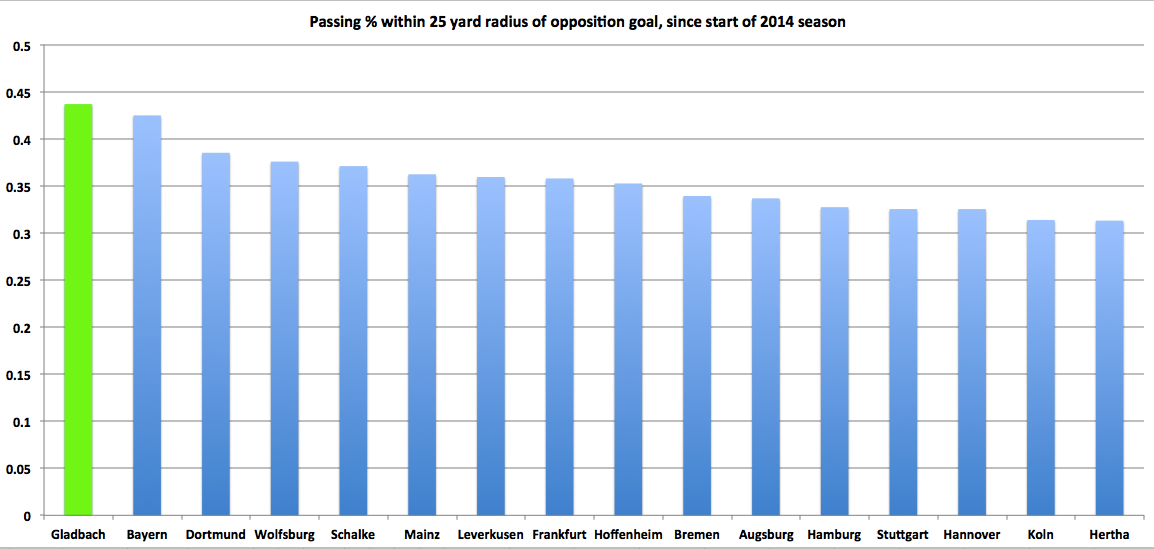
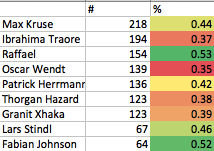

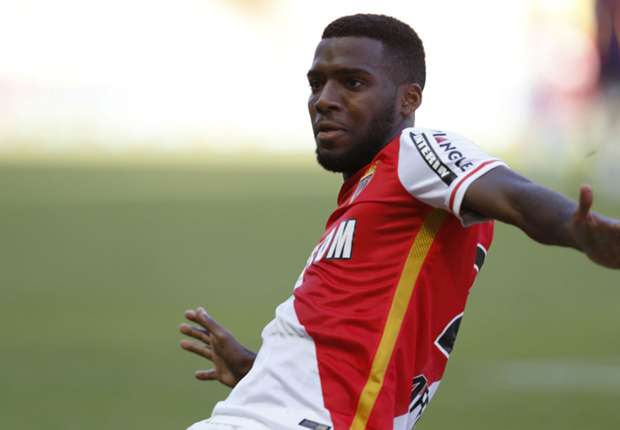 I mentioned him in my Ligue 1 Preview as a player Monaco were wise to grab from Caen but one I didn't know would see many minutes this year. It turned out Monaco basically completely overhauled their players and playing style and Lemar has forced his way into the side with strong performances. An injury has kept his minute total low but he's been a consistent starter when healthy. In a Monaco side with more talented players around him and less of a wild forward crash, Lemar is showing an ability to pass the ball around at a high level. Last year, despite an ugly completion percentage he was already miles above his Caen teammates as far as Passer Rating (a simple method to adjust passes for likelihood of completion). This year he’s been able to play a less breakneck role (passes end 48.5 yards from goal on average this year after 44.5 yards) alongside better teammates and we’ve seen the passing stats skyrocket. The passing percentage is up into the mid-80s and the Passer Rating is well above 100, which is pretty rare and an indication of strong playmaker. Last years attackers with a passer rating above 1 in Ligue 1 were mostly big names: Boufal, Gourcoff, Bernardo Silva, Maurice-Belay, Andre Ayew, Payet, Lucas Moura and Pastore.
I mentioned him in my Ligue 1 Preview as a player Monaco were wise to grab from Caen but one I didn't know would see many minutes this year. It turned out Monaco basically completely overhauled their players and playing style and Lemar has forced his way into the side with strong performances. An injury has kept his minute total low but he's been a consistent starter when healthy. In a Monaco side with more talented players around him and less of a wild forward crash, Lemar is showing an ability to pass the ball around at a high level. Last year, despite an ugly completion percentage he was already miles above his Caen teammates as far as Passer Rating (a simple method to adjust passes for likelihood of completion). This year he’s been able to play a less breakneck role (passes end 48.5 yards from goal on average this year after 44.5 yards) alongside better teammates and we’ve seen the passing stats skyrocket. The passing percentage is up into the mid-80s and the Passer Rating is well above 100, which is pretty rare and an indication of strong playmaker. Last years attackers with a passer rating above 1 in Ligue 1 were mostly big names: Boufal, Gourcoff, Bernardo Silva, Maurice-Belay, Andre Ayew, Payet, Lucas Moura and Pastore. 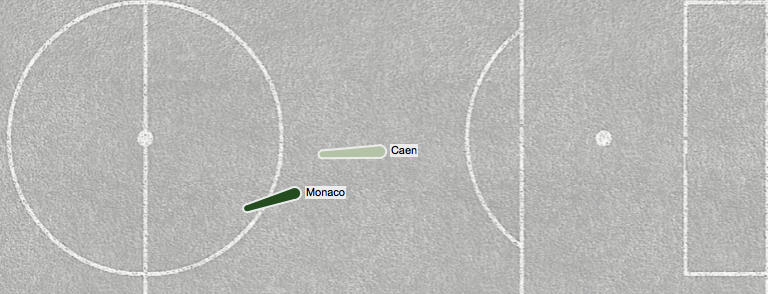
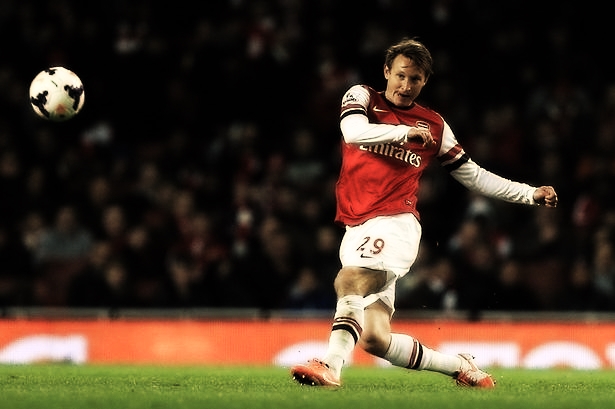

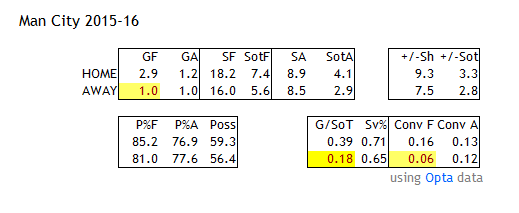

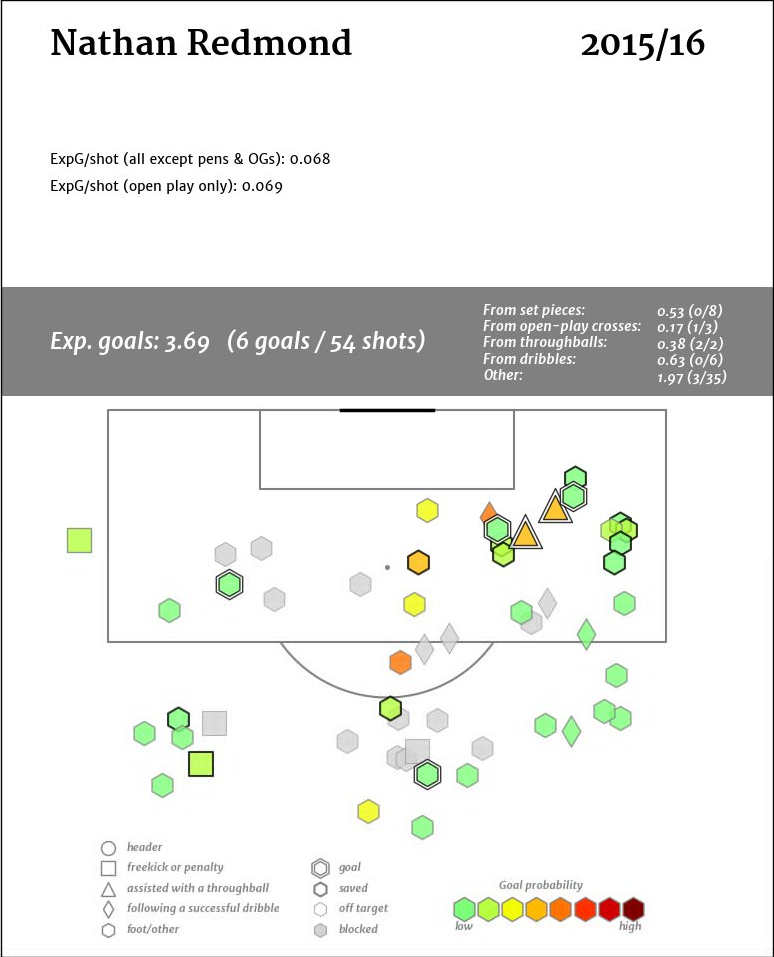

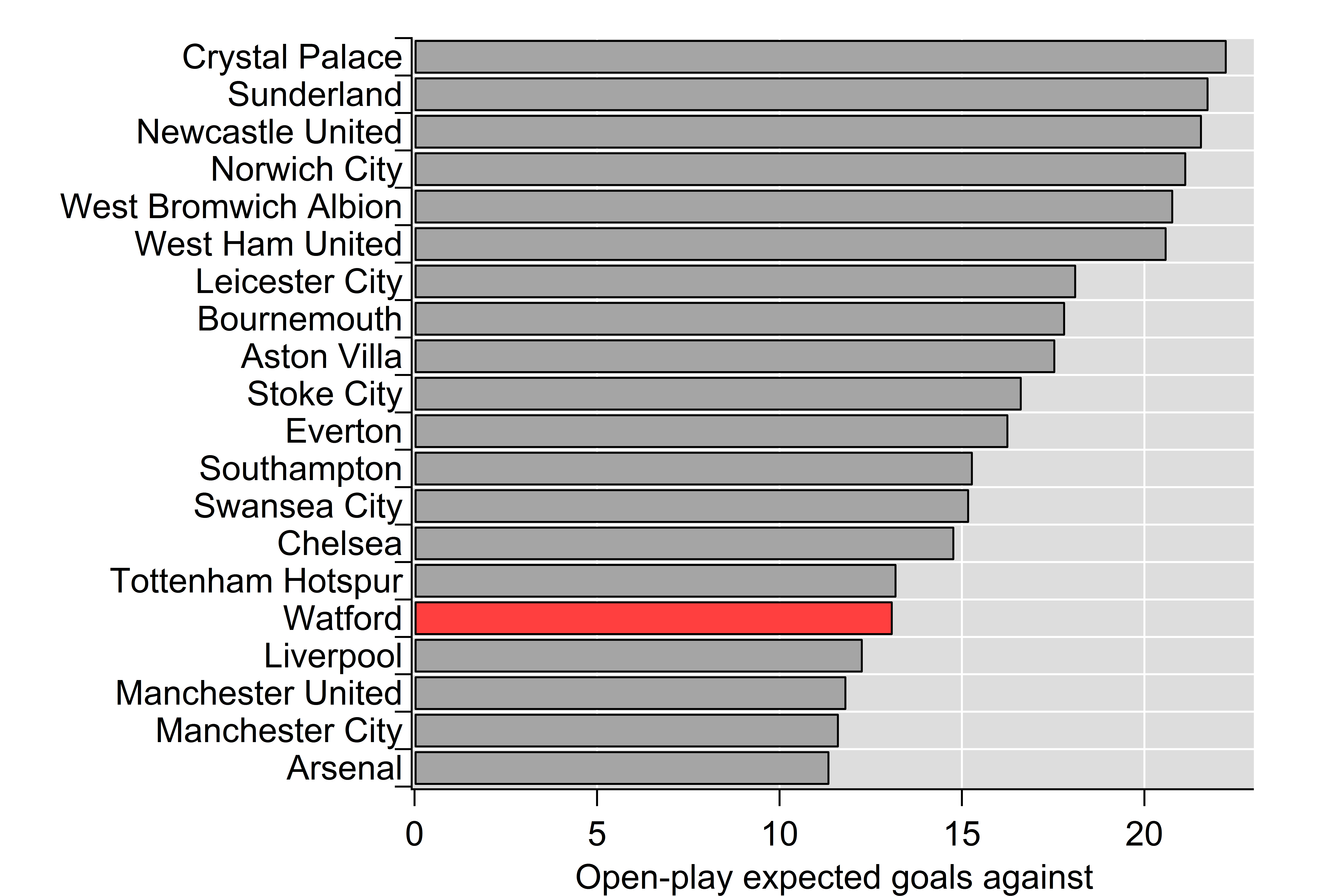
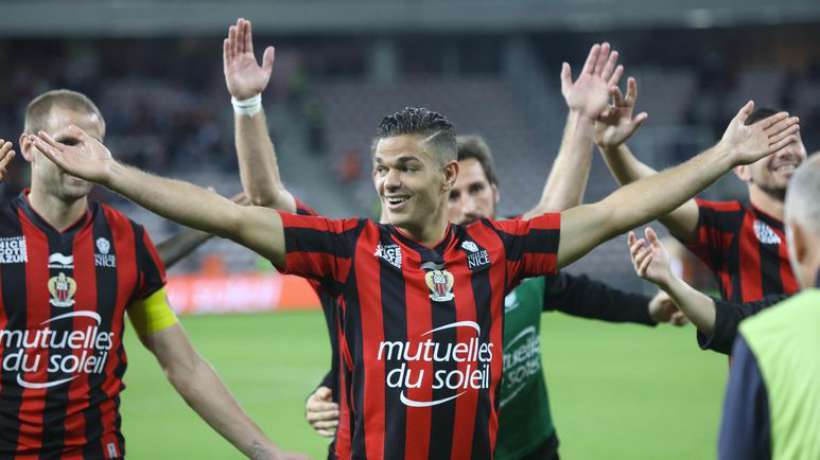
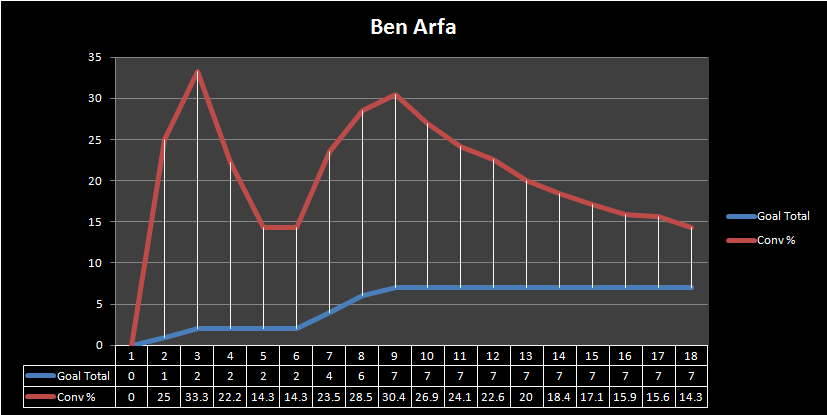
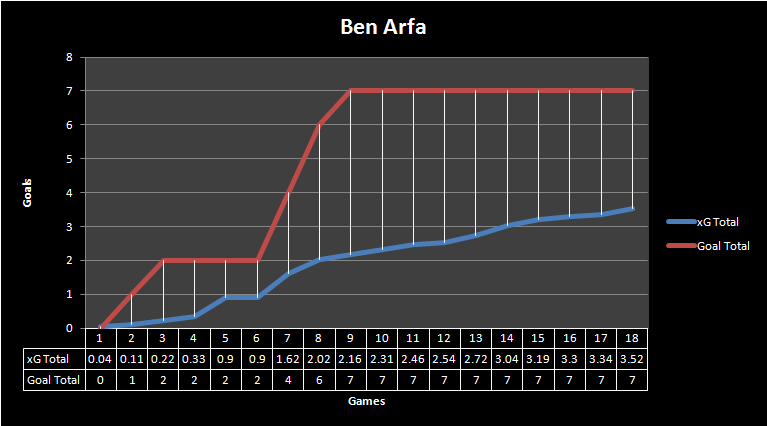
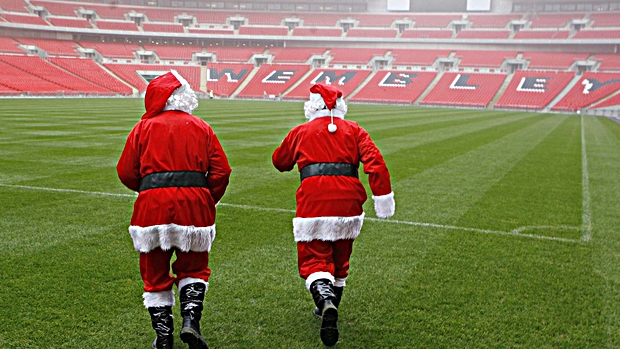
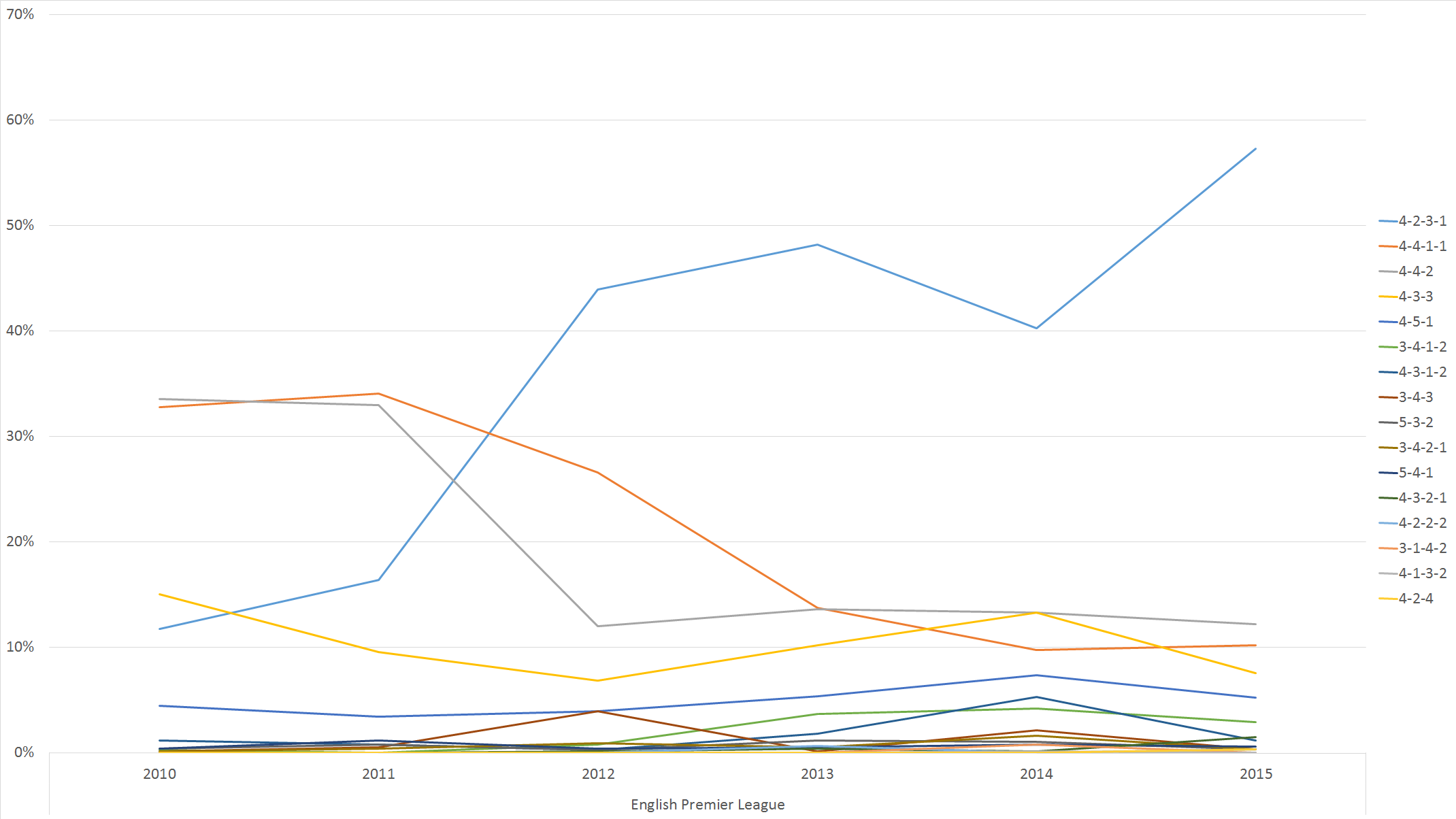
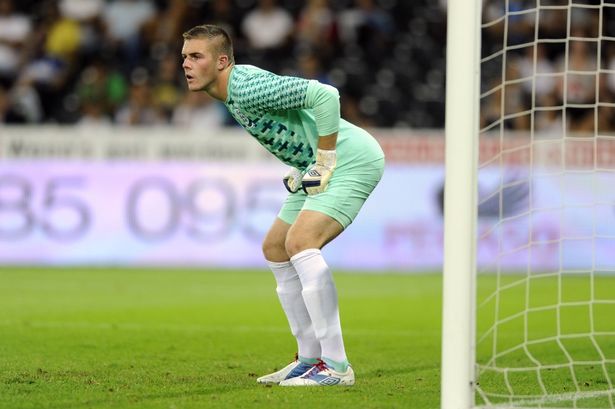

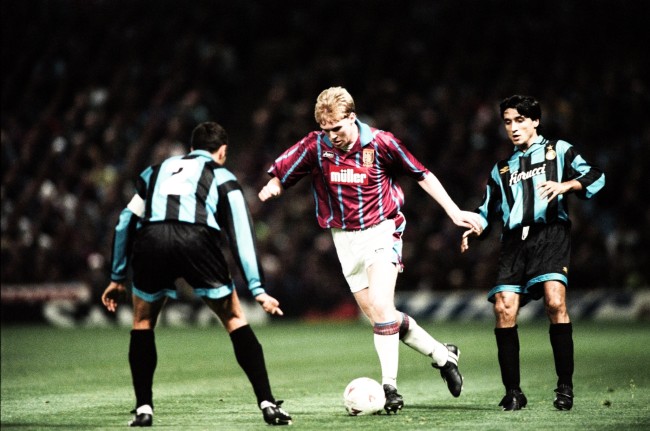

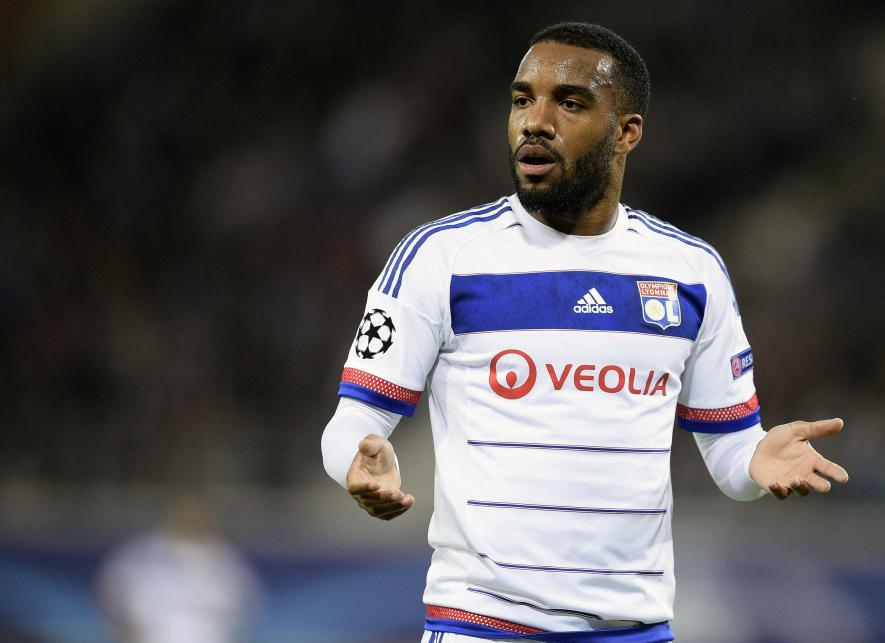
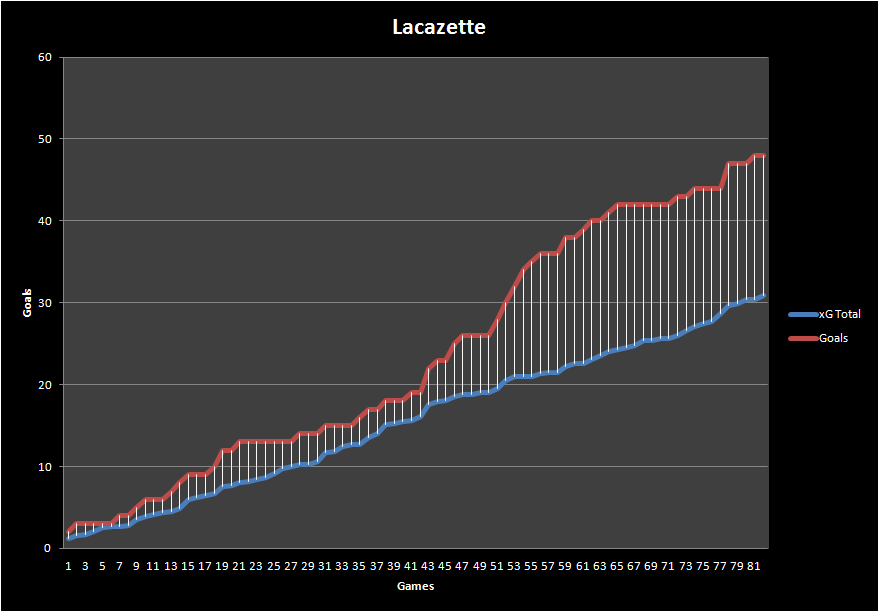
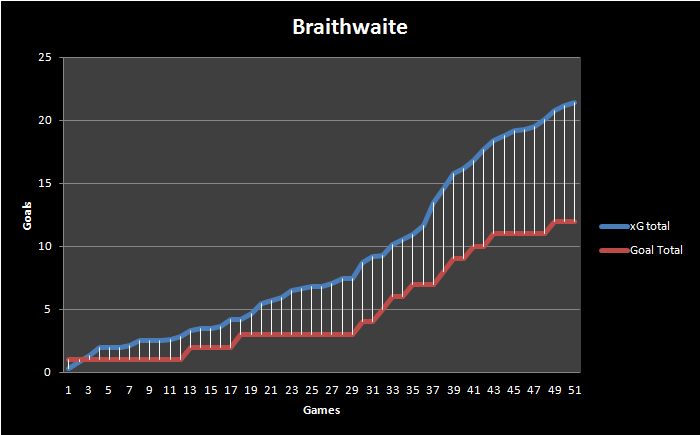
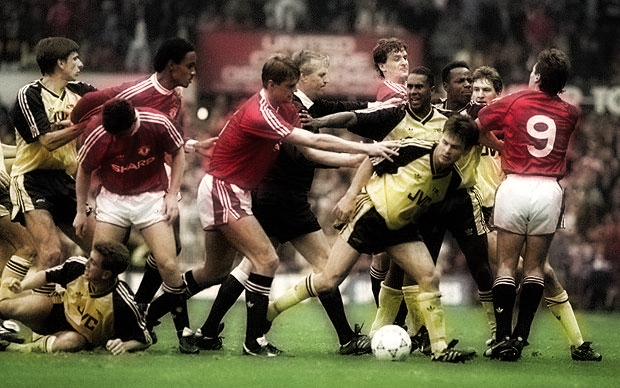
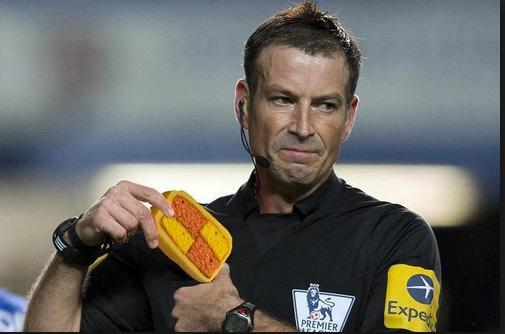

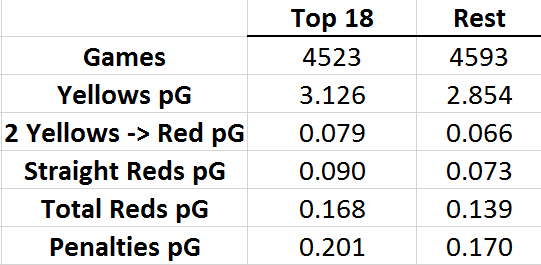
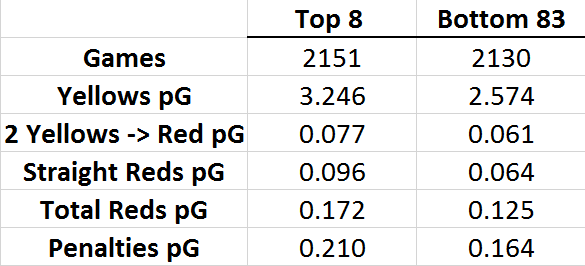
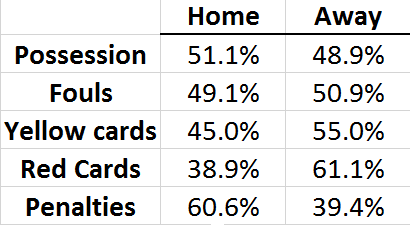
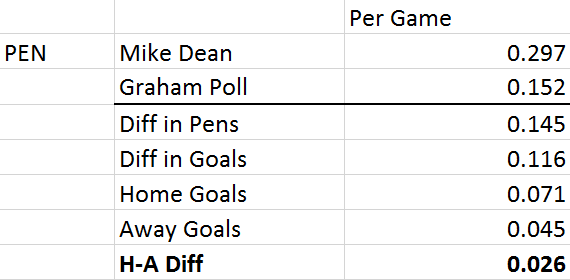
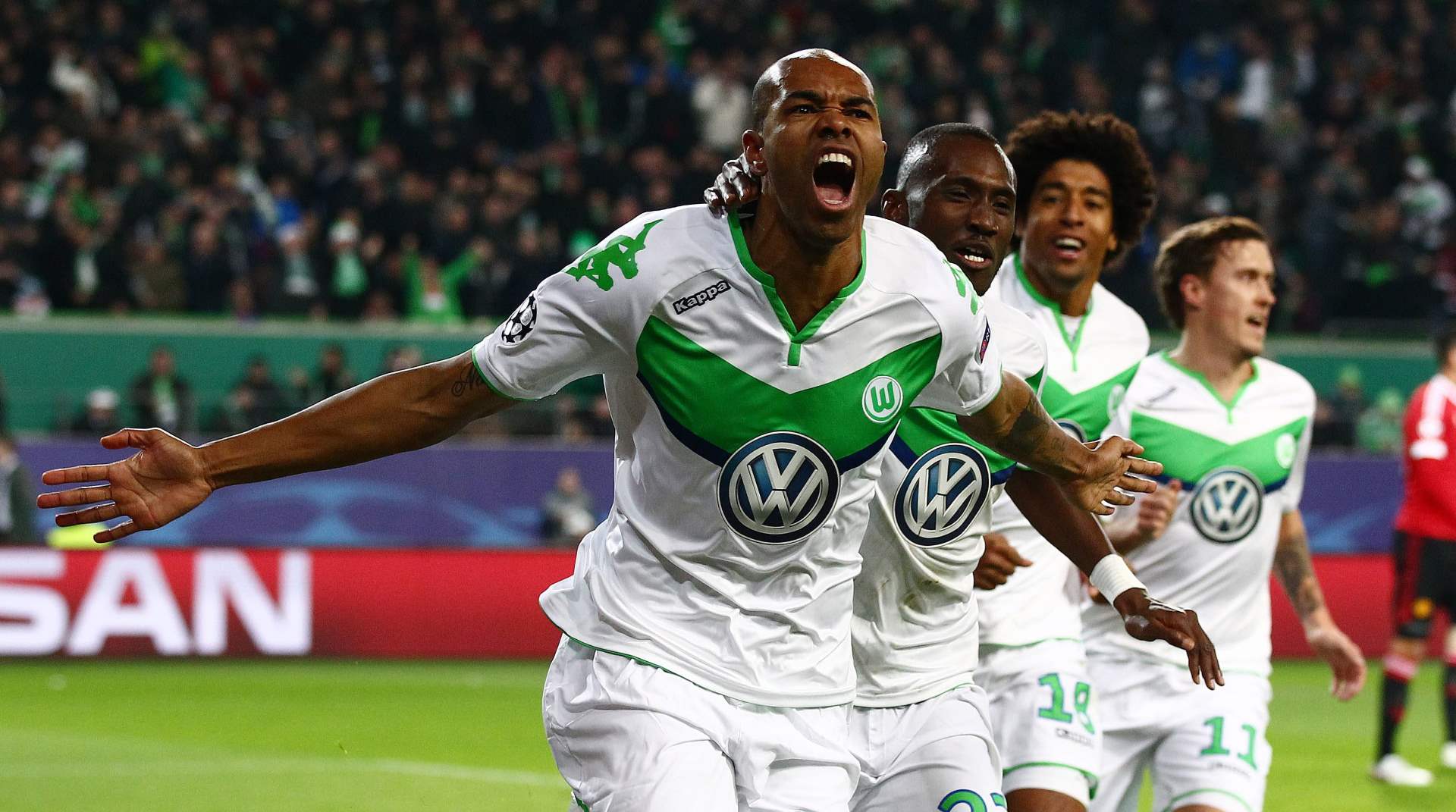

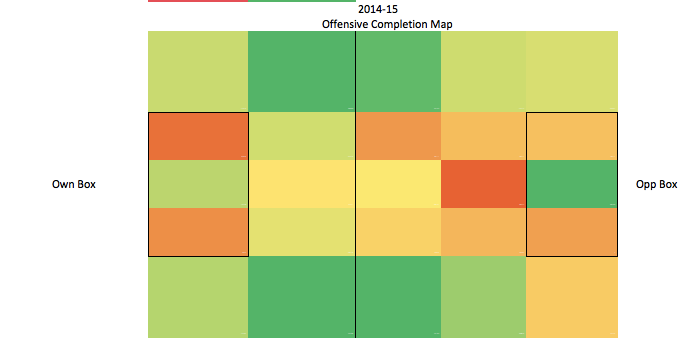
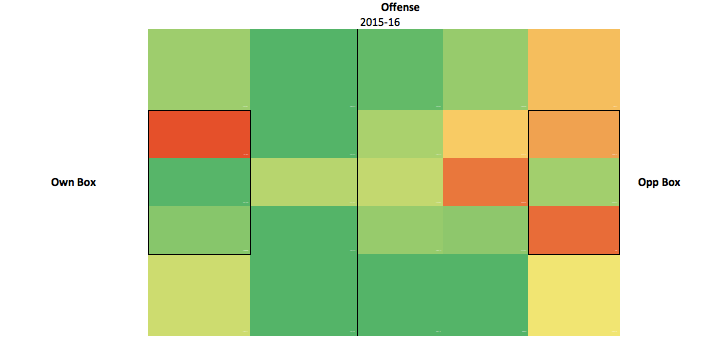 The brighter green a square is, the more completions a team has in that area of the pitch. This is Wolfsburg from last season on top and this season on the bottom. We can see that the Wolves are creeping further up the field this season, especially on that right wing. The center of the pitch is turning a little more green as well as the team as a whole seems to slowly be making the transition toward a self-sustaining attack instead of relying on lightning strike from De Bruyne. One of the driving factors has been Christian Träsch roaming forward from fullback. Only Bayern fullbacks complete more passes per game than Träsch. He advances the ball into attacking areas a lot better than Sebastian Jung did last season. Träsch has already played more minutes than he did last season and is 2nd on the team in completions in the attacking area (two vertical boxes furthest to the right above). Both Vierhinha (17.3) and Träsch (15.5) complete significantly more passes in the attacking area/90 than even De Bruyne (13.9) did last season when he led the team. The team as a whole completes 9 more passes per game in the attacking area. Last year Wolfsburg completed a higher proportion of their attacking passes on the wings than anyone else in the Bundesliga. I hypothesized that they would need to move the ball to the middle more this year with a player like Kruse (and Draxler who they signed after the preview) to create a more dangerous, less predictable attack. That hasn't happened, the wide proportion has actually gone up. In absolute terms they are in the middle of the pitch more and I think they do have a chance of a more central attack as the season goes on, which segues nicely into the next topic. The Replacements Draxler and Kruse Max Kruse from Gladbach and Julian Draxler from Schalke were the two attacking players brought in to help replace De Bruyne's production. This change is a big reason Wolfsburg have moved a little more towards a sustained possession style. De Bruyne was a heavy-action, forward moving attacking player while Draxler and Kruse can provide a key pass, but prefer to keep possession in the attacking area. Draxler and Kruse's completion% are both above 83%, elite territory for attacking players. De Bruyne was down at 74.5% last year, but the chart below showing where the players get and move to ball to explains that.
The brighter green a square is, the more completions a team has in that area of the pitch. This is Wolfsburg from last season on top and this season on the bottom. We can see that the Wolves are creeping further up the field this season, especially on that right wing. The center of the pitch is turning a little more green as well as the team as a whole seems to slowly be making the transition toward a self-sustaining attack instead of relying on lightning strike from De Bruyne. One of the driving factors has been Christian Träsch roaming forward from fullback. Only Bayern fullbacks complete more passes per game than Träsch. He advances the ball into attacking areas a lot better than Sebastian Jung did last season. Träsch has already played more minutes than he did last season and is 2nd on the team in completions in the attacking area (two vertical boxes furthest to the right above). Both Vierhinha (17.3) and Träsch (15.5) complete significantly more passes in the attacking area/90 than even De Bruyne (13.9) did last season when he led the team. The team as a whole completes 9 more passes per game in the attacking area. Last year Wolfsburg completed a higher proportion of their attacking passes on the wings than anyone else in the Bundesliga. I hypothesized that they would need to move the ball to the middle more this year with a player like Kruse (and Draxler who they signed after the preview) to create a more dangerous, less predictable attack. That hasn't happened, the wide proportion has actually gone up. In absolute terms they are in the middle of the pitch more and I think they do have a chance of a more central attack as the season goes on, which segues nicely into the next topic. The Replacements Draxler and Kruse Max Kruse from Gladbach and Julian Draxler from Schalke were the two attacking players brought in to help replace De Bruyne's production. This change is a big reason Wolfsburg have moved a little more towards a sustained possession style. De Bruyne was a heavy-action, forward moving attacking player while Draxler and Kruse can provide a key pass, but prefer to keep possession in the attacking area. Draxler and Kruse's completion% are both above 83%, elite territory for attacking players. De Bruyne was down at 74.5% last year, but the chart below showing where the players get and move to ball to explains that. 